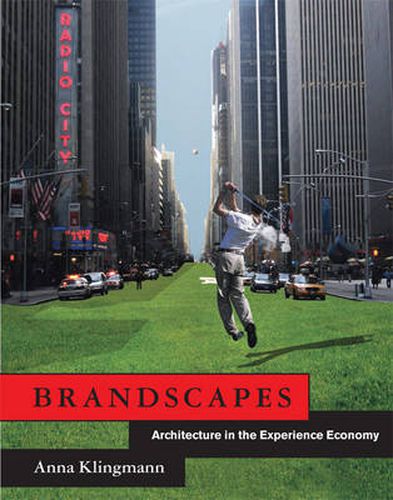Readings Newsletter
Become a Readings Member to make your shopping experience even easier.
Sign in or sign up for free!
You’re not far away from qualifying for FREE standard shipping within Australia
You’ve qualified for FREE standard shipping within Australia
The cart is loading…






Architecture as imprint, as brand, as the new media of transformation-of places, communities, corporations, and people.In the twenty-first century, we must learn to look at cities not as skylines but as brandscapes and at buildings not as objects but as advertisements and destinations. In the experience economy, experience itself has become the product- we’re no longer consuming objects but sensations, even lifestyles. In the new environment of brandscapes, buildings are not about where we work and live but who we imagine ourselves to be. In Brandscapes, Anna Klingmann looks critically at the controversial practice of branding by examining its benefits, and considering the damage it may do. Klingmann argues that architecture can use the concepts and methods of branding-not as a quick-and-easy selling tool for architects but as a strategic tool for economic and cultural transformation. Branding in architecture means the expression of identity, whether of an enterprise or a city; New York, Bilbao, and Shanghai have used architecture to enhance their images, generate economic growth, and elevate their positions in the global village. Klingmann looks at different kinds of brandscaping today, from Disneyland, Las Vegas, and Times Square-prototypes and case studies in branding-to Prada’s superstar-architect-designed shopping epicenters and the banalities of Niketown. But beyond outlining the status quo, Klingmann also alerts us to the dangers of brandscapes. By favoring the creation of signature buildings over more comprehensive urban interventions and by severing their identity from the complexity of the social fabric, Klingmann argues, today’s brandscapes have, in many cases, resulted in a culture of the copy. As experiences become more and more commodified, and the global landscape progressively more homogenized, it falls to architects to infuse an ever more aseptic landscape with meaningful transformations. How can architects use branding as a means to differentiate places from the inside out-and not, as current development practices seem to dictate, from the outside in? When architecture brings together ecology, economics, and social well-being to help people and places regain self-sufficiency, writes Klingmann, it can be a catalyst for cultural and economic transformation.
$9.00 standard shipping within Australia
FREE standard shipping within Australia for orders over $100.00
Express & International shipping calculated at checkout
Architecture as imprint, as brand, as the new media of transformation-of places, communities, corporations, and people.In the twenty-first century, we must learn to look at cities not as skylines but as brandscapes and at buildings not as objects but as advertisements and destinations. In the experience economy, experience itself has become the product- we’re no longer consuming objects but sensations, even lifestyles. In the new environment of brandscapes, buildings are not about where we work and live but who we imagine ourselves to be. In Brandscapes, Anna Klingmann looks critically at the controversial practice of branding by examining its benefits, and considering the damage it may do. Klingmann argues that architecture can use the concepts and methods of branding-not as a quick-and-easy selling tool for architects but as a strategic tool for economic and cultural transformation. Branding in architecture means the expression of identity, whether of an enterprise or a city; New York, Bilbao, and Shanghai have used architecture to enhance their images, generate economic growth, and elevate their positions in the global village. Klingmann looks at different kinds of brandscaping today, from Disneyland, Las Vegas, and Times Square-prototypes and case studies in branding-to Prada’s superstar-architect-designed shopping epicenters and the banalities of Niketown. But beyond outlining the status quo, Klingmann also alerts us to the dangers of brandscapes. By favoring the creation of signature buildings over more comprehensive urban interventions and by severing their identity from the complexity of the social fabric, Klingmann argues, today’s brandscapes have, in many cases, resulted in a culture of the copy. As experiences become more and more commodified, and the global landscape progressively more homogenized, it falls to architects to infuse an ever more aseptic landscape with meaningful transformations. How can architects use branding as a means to differentiate places from the inside out-and not, as current development practices seem to dictate, from the outside in? When architecture brings together ecology, economics, and social well-being to help people and places regain self-sufficiency, writes Klingmann, it can be a catalyst for cultural and economic transformation.